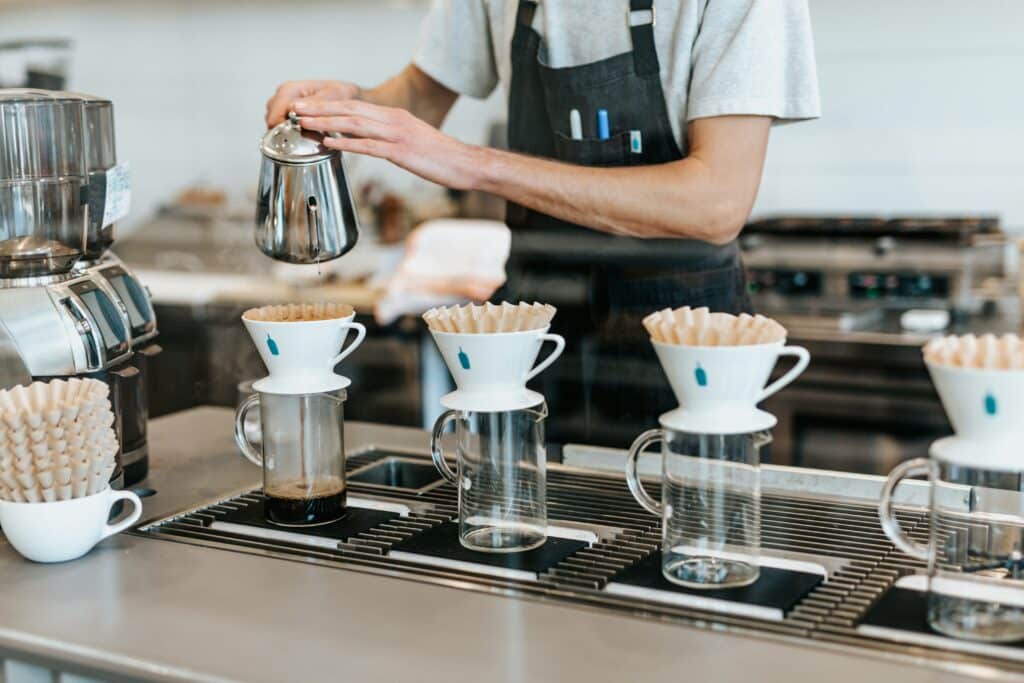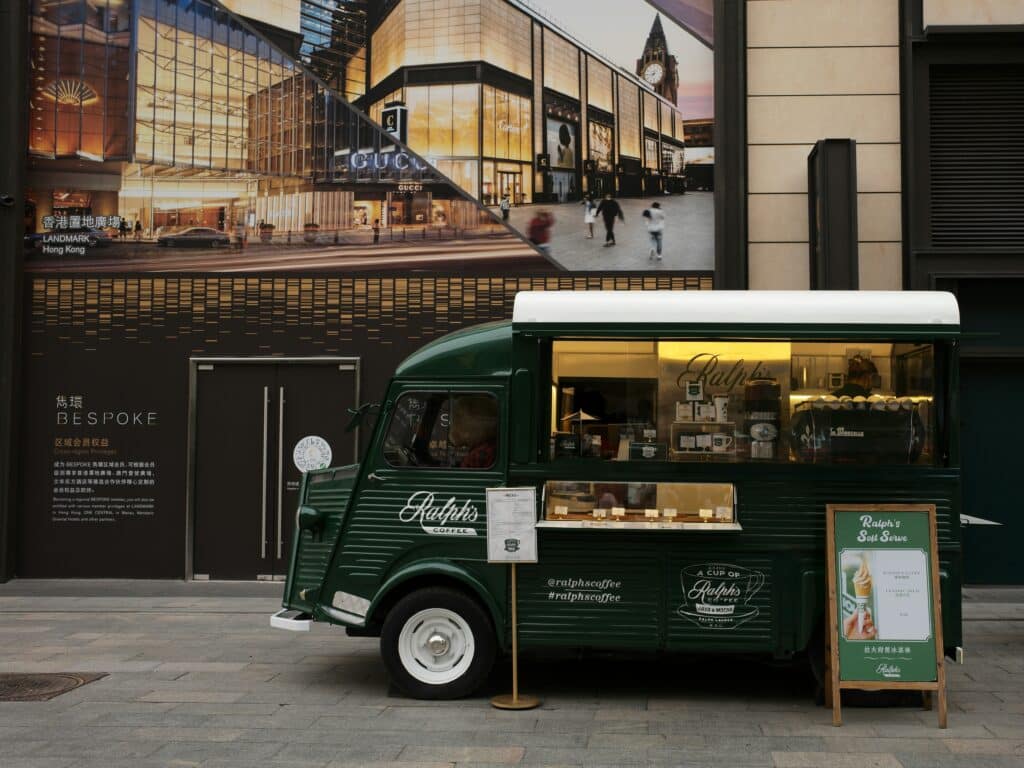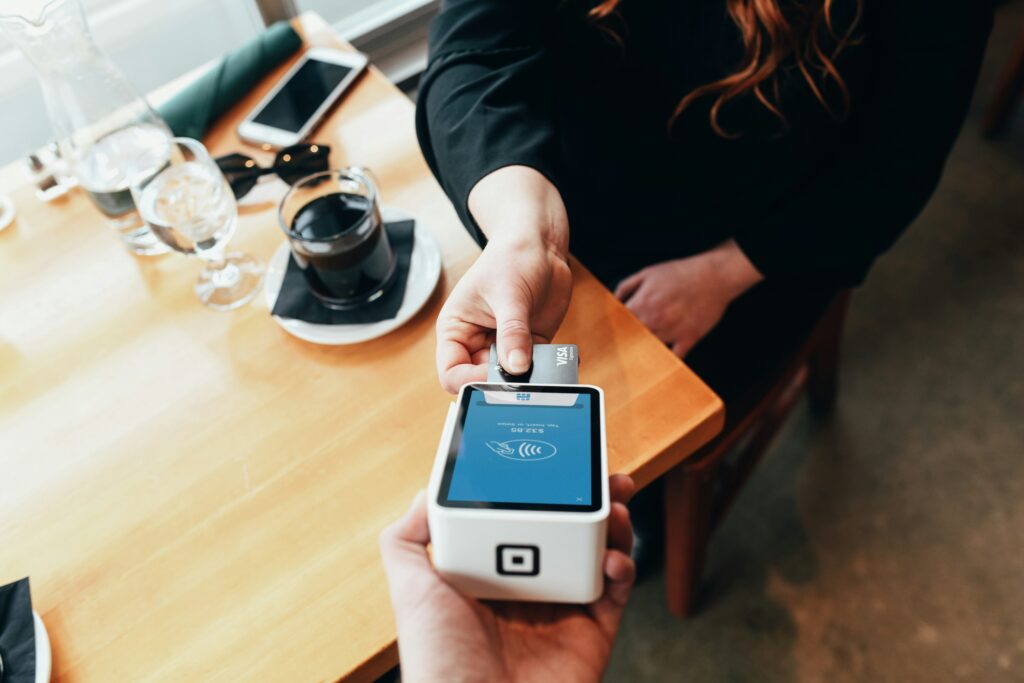By visiting our site, you agree to our privacy policy regarding cookies, tracking statistics, etc.
Key steps and essential strategies for successfully opening and operating a thriving coffee shop and profiting in the caffeine arena.
Opening a coffee shop can be a dream come true for aspiring entrepreneurs, but embarking on the journey requires more than just a love of caffeine. In this article, we will delve into the various aspects of starting and running a coffee business, covering topics such as the initial costs involved and the different types of coffee establishments you can choose from. We’ll also talk about how today’s restaurant technology and software helps run a profitable coffee shop in the digital era.
Like any restaurant business, opening a coffee shop entails various initial investments, with costs fluctuating based on factors like location, size, and concept. Start-up expenses encompass renovation or build-out costs for adapting the space, and purchasing essential equipment such as coffee machines, espresso machines, grinders, and coolers. It also involves investing in point of sale (POS) systems, obtaining licenses and permits, and securing the initial inventory of coffee beans and other ingredients.
Operational costs are similar to that of other restaurant businesses, including things like monthly rent for your space, utility bills, and insurance as well as the two biggest costs of operating any restaurant business: cost of goods sold (CoGS) and labor costs. Together, these two components are referred to as a restaurant business’s prime cost.
There are also several miscellaneous costs involved in running a coffee shop. Some of these include professional and legal fees, maintenance and repair fees, and specialized staff training. This should be included in your budget as a contingency fund for unforeseen expenses.
Regardless of where you’re opening shop, there’s likely to be more than a few existing shops within the area to grab a cup of joe. Allocating a budget for marketing and a grand opening event for promotion should be a crucial component of your initial expenses.
On average, the initial investment can range anywhere from $80,000 to $300,000, depending on factors like location, size, and the type of coffee business you choose. Before you spend any initial funds, it’s crucial to create a detailed business plan to estimate your specific costs accurately.
Deciding where you’ll source your ingredients – namely your coffee beans – is an essential step in starting shop. There are several factors to find the ideal bean for your target customers. Here are some key factors to consider when deciding where to source your coffee beans:

Crafting your coffee shop menu is a pivotal step that goes beyond mere functionality. A well-thought-out menu not only reflects your restaurant’s distinct brand and culture but also plays a crucial role in driving revenue, a factor that can significantly influence the success or failure of your coffee shop, especially in its initial years. Designing a menu is a deliberate process, requiring careful consideration to effectively communicate your cafe’s vision to your customers.
Whether you’re creating a coffee menu for the first time or amplifying your existing menu, today’s restaurant tech and software can help simplify the process. Using restaurant management software, you can investigate the cost, net profit, and popularity of different items for any date range (e.g. different seasons, days of the week, employee shifts). This data not only helps you improve your inventory practices and ordering frequency, but also experiment with menu changes based on your most popular and profitable items through menu engineering.
Generative artificial intelligence (AI) is also useful when making menu changes. Tools like ChatGPT allow you to enter a series of prompts in order to develop new menu items from your existing inventory. Looking for ideas for Christmas drinks to add to your menu? Want to add a unique coffee drink that combine chocolate and berries? Generative AI tools are a great way to get some inspiration.
When it comes to coffee businesses, there’s a diverse range of options to consider. Each type has its unique characteristics and appeals to different target audiences. Let’s explore some popular types of coffee establishments:
A traditional, everyday coffee shop provides a cozy atmosphere for customers to enjoy their favorite brews. These establishments obviously offer a variety of coffee options, but also pastries, and light snacks. Creating a welcoming ambiance is key to retaining customers in a competitive market.
A café typically has a broader menu than a coffee shop, sometimes including full meals. Like a coffee shop, they focus on creating a comfortable environment with ample space for customers to relax, work, or socialize.
Many cafés and coffee shops alike host a variety of weekly events in their space like live music, poetry readings, open mic nights, or trivia to attract customers. When deciding on what type of coffee joint you’ll be opening, it’s important consider what type of people will frequent your shop. This can help you not only develop your menu, but also what type of events you might host.
For those who prefer a quick coffee fix, a coffee bar might be the perfect choice. Coffee bars emphasize efficiency and speed, catering to busy customers who are looking for a swift caffeine boost. While convenience and quality service are paramount in this setting, a coffee bar may have a more limited menu and a smaller space. Coffee bars can have limited seating or no seating at all, which also simplifies their labor needs.

Coffee stands, on the other hand, are usually even smaller, more portable setups. They can be standalone structures or carts that are set up in busy areas, such as street corners, markets, or events. Ideal for high-traffic areas, coffee stands are compact and designed for quick service and convenience for on-the-go customers.
If you’re interested in combining the love for coffee with the popularity of bubble tea, a boba shop might be the right fit. Also known as a bubble tea or boba tea shop, these establishments specialize in serving the popular beverage that originated in Taiwan – one that has significantly grown in popularity in cities across the United States over the last several years.
Boba tea typically consists of a base tea, often milk tea, combined with chewy tapioca pearls, fruit flavors, or other add-ins. The drink is known for its unique combination of textures and flavors, with the chewy tapioca pearls adding a delightful contrast to the smooth tea. Many boba shops offer a diverse menu of both their boba drinks, coffees, and other caffeinated beverages that can attract a broad customer base.
A bookstore cafe is a hybrid establishment that combines the elements of a traditional bookstore with those of a coffee shop. In a bookstore cafe, customers can browse and purchase books while enjoying the ambiance of a cafe setting. These establishments often feature shelves of books, offering a selection for customers to peruse, and they typically provide comfortable seating areas where patrons can relax with a cup of coffee, tea, or other beverages.
The concept of a bookstore cafe is designed to create a cozy and inviting environment that encourages patrons to spend extended periods of time reading, studying, or simply enjoying the atmosphere. The cafe aspect usually offers a menu of coffee and other refreshments, as well as a selection of snacks or light meals. Some bookstore cafes also host literary events, book clubs, or author readings, enhancing the cultural and social aspects of the space.
For a mobile and flexible business model, some caffeine entrepreneurs may consider a coffee truck. These on-the-go establishments are perfect for events, festivals, or catering opportunities. Ensure your truck is equipped with all the essentials to serve quality coffee on the move.

While these are all popular business models, there are no steadfast rules for the type of coffee establishment you open. Restauranteurs and entrepreneurs are always exploring new models and putting your own creative spin on your shop is a great way to differentiate yourself from the competition. Whether it’s through the drinks on your menu, the ambiance, or the events you host, explore the many ways to make your establishment unique.
Regardless of the type of establishment you open, your coffee venture requires careful planning, dedication, and a deep understanding of your target audience. By choosing the right type of coffee business and managing your finances wisely, you can develop a successful, profitable operation that keeps your neighborhood energized throughout the day. Remember, success in the coffee industry often boils down to a perfect blend of passion, quality, and customer experience!
Every restaurant business wants reliable, hardworking employees, but when hiring for a coffee shop, there are some additional considerations. Here are some specifics to keep in mind when hiring your coffee shop staff:
There are no steadfast rules for the type of coffee establishment you open. Restauranteurs and entrepreneurs are always exploring new models and putting your own creative spin on the coffee world is a great way to differentiate yourself from the competition. Whether it’s through the drinks on your menu, the ambiance, or the events you host, explore the many ways to make your establishment unique.”
Selecting the right point of sale (POS) system for your coffee shop involves a careful consideration of several key factors. The system’s interface should be user-friendly, allowing baristas and staff to quickly adapt and navigate through its features effortlessly. An intuitive interface contributes to smoother operations and minimizes the learning curve for your team.
Effective order management is another critical aspect. The POS system should facilitate easy customization of orders, accommodating modifications, additions, and special requests. This is particularly important in a coffee shop where customers often have specific preferences and variations in their orders.
Seamless integration with various payment methods is essential in today’s diverse payment landscape. A good POS system should support credit/debit cards, mobile payments, and contactless transactions, ensuring that your coffee shop can cater to customers using their preferred payment methods.
A good POS will also integrate with your restaurant’s accounting and operations platforms. With this integration, your operations platform can pull detailed data directly from your POS in real-time. The integrated platform automatically inputs daily sales and labor accrual data entries into the accounting general ledger (GL). Detailed POS data integrated with your restaurant operations and accounting drives useful insights in sales reporting, menu engineering, recipe costing, labor details, and enhanced business analytics and reporting.

Waking up hours before sunrise and pushing through the morning rush is hard enough. Your coffee shop software shouldn’t make all your other work more difficult. With the right restaurant software, you can integrate every aspect of your operations and all your technologies to streamline your business while getting real-time insight into performance.
The right software eliminates tedious, time-consuming back-office work across your business. Today’s successful coffee shops big and small use this specialized software to manage many areas of their business. Some of these include store operations (e.g. inventory, vendor purchases), workforce (e.g. payroll, scheduling, hiring), and accounting (e.g. accounts payable, bank reconciliations, cash management).
As with your point of sale, one of the most important things to consider when choosing the tech tools you’ll use is integration. You shouldn’t have to use different systems every day to manage inventory, purchasing, sales, and accounting. And your employees shouldn’t have to use different systems for onboarding, training, and scheduling. Find a system that either has multiple software tools under one roof, or at least one that communicates and integrates well with other software.
See why more than 40,000 restaurants use Restaurant365
Embarking on the journey of opening and running your own coffee shop is about more than just serving coffee; it’s about building a brand, cultivating an atmosphere, and fostering a sense of community. From the early stages of planning to the daily grind of operations, every step is a testament to your dedication and resilience.
Flexibility is key in this entrepreneurial endeavor. Trends may shift, customer preferences evolve, and unforeseen challenges arise. Adapting to these changes with a nimble mindset is crucial for long-term success. Whether it’s experimenting with new blends, introducing innovative menu items, or incorporating feedback from your patrons, staying attuned to the pulse of your community ensures relevance and growth.
May your coffee shop venture be a source of pride, a place of camaraderie, and a lasting contribution to the community you serve. Good luck in the entrepreneurial adventure that awaits!
Share this blog:
500 Technology Drive, Suite 200
Irvine, CA 92618
Westech 360
8911 N Capital of Texas Hwy
Building 1, Suite 1200
Austin, TX 78759
Restaurant365 bridges the gap between accounting and operations by centralizing all data, helping restaurant operators to become more efficient, accurately forecast, and tackle any challenge or opportunity with speed and accuracy.